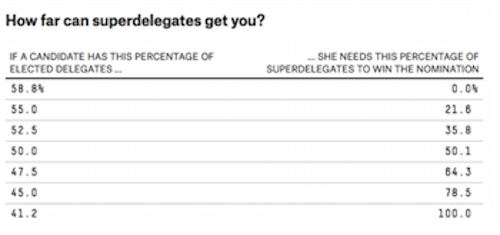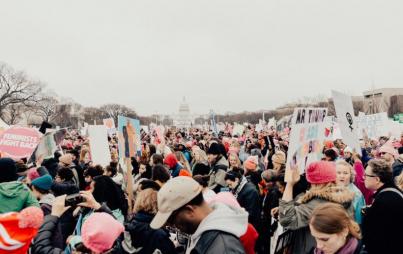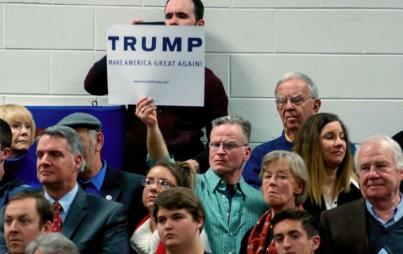
No way this cute lil guy is Team Ted! His tongue is blue. Dead giveaway.
This election season so far has raised a series of questions.
Questions like: What would comprehensive immigration reform look like? Do we need to improve Obamacare? How do we deal with ISIS? Is Ted Cruz a real person or, as my friend Joslyn suggests, a sack full of lizards in a human skin?
But probably the most pressing question among Democrats is: What even is a super delegate — and why should I care?
To understand super delegates, you first have to understand the delegate system for the Democratic Party. After the 1968 election, the Democratic Party decided to make it a more egalitarian process by establishing state selection processes (caucuses and primaries) that allow the rank and file party members to have a say.
Each state then sends a delegation of representatives to the National Convention where they will stand in support of one candidate or another, based on the primary results from their state. Because the Democratic Party mandates that pledged delegates be awarded on a proportional basis, no state delegation will be 100% for any particular candidate. The pledged delegates are required to vote for the candidates to which they were assigned by their state primary results.
To put it more simply, let’s imagine State X has a total of 10 pledged delegates to divide up. If the primary results in State X are 60% of votes to Candidate A and 40% of votes to Candidate B, then 6 of the delegates will cast votes for Candidate A at the Democratic National Convention and the remaining 4 will cast votes for Candidate B. There’s no case where a candidate walks away with all the delegates from any state.
This is why it’s not the number of states won or the actual vote tallies that are the numbers to watch in the primaries — it’s the delegate counts.
Then there are super delegates. Sadly, these are not delegates wearing capes and wielding lassos of truth. Super delegates are party representatives who are free to choose who they want at the convention. Super delegates are distinguished party leaders and elected officials, including all Democratic members of the House and Senate and sitting Democratic governors. Other super delegates are chosen during the primary season.
What’s the big deal about a bunch of party elites having free rein to cast their own ballots at the convention? Well, theoretically, there are enough super delegates that they could tip the voting at the convention. For example, if the candidates went into the convention in a dead heat, the super delegates would break the tie. Even if the candidates aren’t tied, the super delegates can change the outcome at the convention. 538 has this great chart to show how the numbers would work out:

So, now for the big question: who is winning the Democratic primary race? According to the Real Clear Politics delegate counter, Hillary Clinton. As of right this second (and this is being written before the results from the Wisconsin primary are in) she has 1,243 pledged delegates, whereas Bernie Sanders has 980. She also has 469 super delegates currently saying they intend to support her compared to Sanders's 31 super delegates. That puts the total delegate counts at 1712 to 1011.
It doesn’t do to count your super delegates before the convention, however, since they can (and sometimes do) change allegiances. We saw that in 2008 when it became clear that Obama was the favorite candidate and super delegates wanted to cement his nomination. It’s possible that some of Clinton’s super delegates could switch sides this year, too.
Who will be the ultimate winner? That’s a question I can’t answer.








